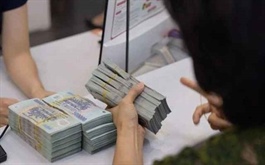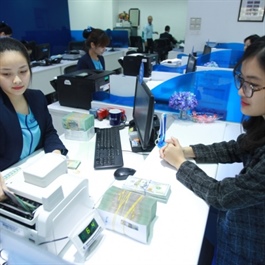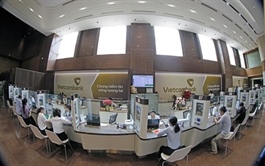Lending interest rates continue on downward trend
Lending interest rates continue on downward trend
Commercial banks have reduced lending rates in favour of business and production activities, but borrowing remains low.

Since the beginning of 2024, Agribank has reduced deposit interest rates twice, according to general director Pham Toan Vuong.
Currently, Agribank’s average lending interest rate is down 0.42 per cent per year compared to the beginning of 2023 and down 0.13 per cent compared to the beginning of 2024.
According to Tran Long, BIDV’s deputy general director, its average lending interest rate in VND as of January 31 decreased by 0.24 per cent compared to the end of 2023.
Pham Nhu Anh, general director of MB, said that the new loan interest rate has decreased by about 4 per cent compared to the average in December. With deposit interest rates already negative, lending interest rates anchored by deposit interest rates are only slightly higher than inflation.
“MB’s lending interest rates and those of banks in general are very low. I think lending interest rates are at the bottom and new lending at the current interest rate is on par with previous incentive packages,” he said.
At the State Bank of Vietnam (SBV)’s industry-wide online conference on promoting bank credit, Ha Thu Giang, director of the Credit Department for Economic Sectors under the SBV said that it would continue to maintain operating interest rates to create conditions for credit institutions to access capital at low cost.
Accordingly, as of January 31, deposit and lending interest rates continue to trend downward, with the average for new transactions of commercial banks decreasing by about 0.15 per cent per year and 0.25 per cent per year respectively, compared to the end of 2023.
While lending interest rates have dropped sharply, credit growth is unstable. According to Giang, credit growth has decreased by 0.6 as of the end of January. It is estimated that about $3.3 billion has been reduced in the economy.
Vuong of Agribank anticipated that the interest rate drops would continue in 2024, and the SBV would continue to have proactive solutions to manage interest rates in accordance with domestic and international market developments.
“However, despite these advantages, banking businesses faces many difficulties. Although the economic sector’s capital absorption capacity in 2024 is assessed to be positive, it is expected to still be low. Some growth drivers such as exports, consumption, and industrial production are still slow,” Vuong said.
He proposed that the SBV allow credit institutions to restructure their debts to keep in the same debt group for the principal balance arising in 2023, while extending the restructuring time to the end of this year instead of June 30 as currently. On that basis, he proposed to allocate additional provisions for three years, up to 100 per cent by the end of 2025.
Tran Long from BIDV emphasised the importance of increasing equity capital to bolster credit institutions’ lending capacity, calling for government support in this regard. Long called for full implementation of commitments to alleviate difficulties for build-operate-transfer projects and recommended redirecting resources from expired support programmes towards direct customer support measures.
“The SBV should continue to improve the legal framework in the banking sector, especially for the ongoing banking digital transformation process,” Long said.
Do Thanh Son, deputy general director in charge of VietinBank’s Executive Board, said that it was necessary to research policies to support and remove difficulties for businesses.
“This includes diversifying supply sources and partners, suppliers of raw materials, fuel, auxiliary materials, and input components to meet production and business needs and diversify export markets, while at the same time supporting businesses in improving their competitiveness and participating in the global value chain,” Son said.
“Stability and development in production and business activities is a prerequisite for credit growth, while ensuring the operational safety of the credit institution system and the entire economy,” he added.

























